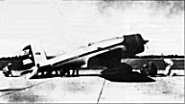

The Trasatlantic Flight of Menéndez Peláez (1937)Rubén Urribarres |
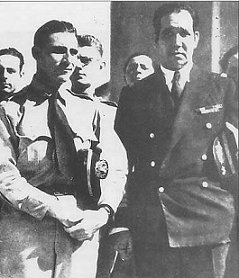 At the left, Menéndez Peláez, besides the Colonel González, the Cuban Constitutional Navy Chieff
At the left, Menéndez Peláez, besides the Colonel González, the Cuban Constitutional Navy Chieff
The South Atlantic route was used for first time by Portuguese aviators in 1922. In eight occasions was utilized this route by Spaniards and Portuguese, but all they had been carried always from the Iberian peninsula toward America; never was made any flight in contrary direction, from some latin-american country. Were studied various raids and only seems to be that there was an intent, projected in Mexico by Francisco Sarabia, although by oficialists problems was not carried out. All these intents come down by intending to beat the distance record like the already carried out.
The flight of Barberán and Collar, had left a good remembrance in the Cuban people, and with more realistic plan the Lieutenant of the Aviation of the Cuban Constitutional Navy, Antonio Menéndez Peláez, with the support of its superiors, prepared a crossing following the route that a year before was made by a Spanish civil pilot, although in this occasion in contrary direction, crossing the South Atlantic in turn narrower, since the more east point of America to the more westerner of Africa.
The chosen
airplane was a Lockheed 8 Sirius of the Cuban Navy Aviation, serial
number 10, ex NC-16W, c/n 146. To the plane had been introduced a series of improvements,
as a bigger fuel tank, and were retired some equipments of the plane in order
to reducing the weight and to use in their place more fuel. That was a wood plane
and had one engine Pratt & Whitney WASP of 550 HP, a cruiser velocity of 290km/h
and did not have radio. On January 9 of 1936, the airplane was already ready for
the flight in the aerodrome of Rancho Boyeros, where in a solemn ceremony, with
the presence of ecclesiastical, civil, and military authorities, was blessed and
baptized as "4 of September", in allusion to the movement promoted in 1933 by
the sergeant Fulgencio Batista, who made a coup that ousted the
president that in those moments governed the destinies of Cuba.
From Havana he flew to Camagüey, the day 11, to begining the flight from here until Sevilla, like the flight of the "Cuatro Vientos", intending by this way to correspond with this gesture made by the Spanish pilots.
The
day 13 take off at 7 o'clock of the morning from the aerodrome of Camagüey,
after said good-bye by the gathered there, to Caracas, Venezuela. The following
phases were to Trinity, Guyana, the French Guayana, and later by Brazil (Belém,
São Luís and Fortaleza). Finally on February 2 he arrives to Natal
(Brazil). This trip of three weeks delayed by a series of technical and burocratics
incidents. The time of duration went of 29h. 25m, saving a distance of 6.558
Km.
In Natal he remained a week, employed the time in the preparation of the great leap and to the wait better atmospheric conditions. The day 9, at the 23h.10m., with the completely full fuel tanks (2.000 liters), take off in a complete darkness with to the western coast of Africa. At three o'clock from the take off, he finds a strong storm of air and rain, that he flew during some hours completely blindly.
To the dawn the storm goes undoing, finding some conditions for normal flight. To the 15h.and 30m. from the take off from Natal, and having traveled through 3.160 Km, he lands in the aerodrome of Bathurst (Gambia).
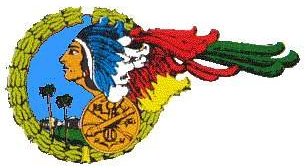 Emblem of the Lockheed 8 Sirius and whose coloring corresponds to the Indian feathers, that symbolize the colors of the movement "4 of September" of Fulgencio Batista.
Emblem of the Lockheed 8 Sirius and whose coloring corresponds to the Indian feathers, that symbolize the colors of the movement "4 of September" of Fulgencio Batista.
During two days, that employs in revising the airplane and to rest after that endeavored crossing, its stay in this country ended, and the 12 he begin again the raid to the then Spanish colony of Cabo Juby in the Western Spanish Africa, where lands after little more than two hours, having traveled through 1.789 Km., and to fight with a strong sand storm. As this storm still persists, he remains retained in these installations during two days more, where received the hospitality of the Spanish aviators.
The 14 he take off from Cabo Juby to Sevilla, where lands in the aerodrome of Tablada, giving end to the raid with a total traveled distance of 12.606 Km. since its departure from Camagüey. With this flight made homage to the aviators Barberán and Collar that three years before carried out the flight from Tablada to Camagüey, returning in this way the visit that the "Cuatro Vientos" did to Cuba.
In Madrid he was received by the President of the Spanish
Republic and other members of the government, being awarded with the Order of
the Republic. In Cuba also receives for this flight all types of prize, granting
him the Naval Military Cross and its ascent to First Lieutenant.
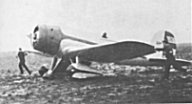 |
Route of his flight. In
total flew 12,606 km, in 9 parts and 33 days, 10 hours and 20 minuts, flying
in a average velocity of 185 km per hour and a total flight time of 61 hours
|
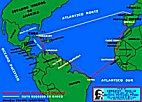 |
During its prolonged stay in Spain, receives for all the visit cities all types of homages from the Spanish authorities and countrymen of the Cuban colony in Spain. One of the visited places by its bonds of birth was its dear Asturias.
On April 27, 1933 he arrives at Santander in whose port embarked in the trasatlantic "Cristóbal Colon" to Havana, where was received like a hero. With this flight Menéndez Peláez becomes the first Hispanic aviator in flying from America to Europe.
|
|
|
|
|||

|
|
